Back to Minnipa
- samantha battams
- Nov 2, 2020
- 12 min read
Updated: Feb 12, 2021
Back to Minnipa: a family history pilgrimage
In July I had decided to visit #Minnipa, on the West Coast (over 600km from Adelaide), with my sister Raelene and my niece Jessica, for a family history pilgrimage. Minnipa was where our grandfather, Stephen William White, had received #SoldierSettlement land following the #FirstWorldWar. He married his wife Margaret Holman, 10 years his junior, at the Congregational Church in Port Adelaide in 1919 (wedding picture below) and moved to Minnipa in 1921. Poor Stephen William White had lost his (state bank/soldier) house in Cheltenham in May 1921 (which he was renting out to a returned soldier with a large family), and in November 1921 was allocated the land at Minnipa East.
The story went that Margaret had lost her fiancé in #WWI, but further research showed that her uncle and cousin also died in WWI and are buried in #VillersBretonneux, France. Her brother Frederick Holman also went to war (both WWI and WWII - he is pictured in the group photo, seated at front, second from left).
Unable to have children, Margaret and Stephen White adopted a baby (our father) in 1926. They lived in Minnipa for 18 years, but none of us had been to Minnipa before, and we didn't know what to expect.

I asked our eldest sister Lyn what she remembered about our grandfather before we left for Minnipa. She was sixteen when he died, but I was born a few years after his death – he knew 4 of his 5 grandchildren. Lyn said she remembered him playing music in the back granny flat where he lived at our house, such as Harry Belafonte. I listened to some Belafonte songs, including his popular ‘Island in the Sun,’ before I left.
We stayed in Minnipa for three nights, and #MtDuttonBay for two nights. On the long drive to Minnipa we briefly stopped at Port Augusta (Wadlata Outback Centre) and #Kimba, at the painted siloes and the #BigGalah.

On the first night we met our friendly host at the Minnipa Hotel, Rick Elefson, whose family had managed the hotel since my grandfather’s time. Rick’s father was one year older than our father would have been. Rick’s Grandfather’s story was interesting – he was a twin who had arrived on a boat from Norway with his twin brother, and they both jumped ship at Port Pirie. Sadly, as the twins separated and changed their names in order to remain hidden from the authorities, they never found each other again.
I had a prior phone call with Rick, as a work colleague from Ceduna knew him. When we arrived, Rick showed us a map of the land parcels in Minnipa, and showed us which one Grandpa White owned, section 21 (his son and two of his grandchildren were born on the 21st!). We saw from the map that it had a large bit of granite on the land, and #TchardulkuRock next to it, with the old Minnipa East school on an adjacent farm. We could see that another member of the White family (David Edward White, our great grandfather) had the farm just opposite ‘White’s Farm,’ Section 16. Dad also had his older cousin (actually his Dad’s cousin) on the adjacent farm, Bill Surman (whose parents had both died when he was young, so he was cared for by his maternal Auntie, Linda White nee Cox). Minnipa was also the site of the ‘Minnipa Experimental Farm’ established by the government.
At dinner we met some locals, including Bruce Heddle and his wife/family and Jack Gosling and his partner. We were told that the large granite rock on the White farm had been completely destroyed, fissured by a mining company during mining in the 1990s so now it could neither be mined (as it lost its value due to the fissure), and it was also destroyed as a significant Aboriginal site (thankfully nearby #TchardulkuRock is recognised and protected as such). We were advised us to have a look in the archival room behind the Wudinna Council offices (where we later found many local history pictures and archives – which require better protection from the weather!).
We were told something interesting about the farm leases – due to the #GreatDepression, many farmers engaged in share farming to try to survive, so the land became partially owned, by a bank, or by groups of farmers. Tennis player Pat Cash’s grandparents had owned the land that Jack, a Poochera local, now owned and the land had a $1500 debt on it that he had to pay before it became freehold. The region has created some great sporting talent – the Phillips family, well known in football circles (Greg Phillips), also came from the tiny town of Minnipa (a Kwaterski daughter, Mary, married a Phillips).
As members of the #PortAdelaideFootballClub, it was good to see that the town strongly supported the club in the AFL, with the #PortPower flag proudly flying high outside some of the houses. The second evening Rick Elefson organised for the live footy to be on the TV in our rooms, but we were driving around that day in Wudinna – listening to the exciting match on the radio, where Robbie Gray kicked the winning goal after the siren.
From Bruce we found out about ‘Climate App’ where you can check the climate and rainfall of each year. We saw that there had been good rainfall just before our Grandfather left Minnipa in August 1939 to go back to Port Adelaide to become a ‘foreman stevedore’. We knew he had become bankrupt in 1936. The years 1927 to 1930 were tough on the farm, with Stephen White being threatened with foreclosure and in 1930 he started share farming until the bankruptcy. He was keen though, with one newspaper reporting he was the first to harvest his wheat and deliver it to the train that year. Perhaps the rainfall in the years leading up to 1939 meant the family were able to ‘pay up’ and finally had enough money to leave. Our grandparents may have wanted our father to have better opportunities in the city. Life on the land at that time was extremely harsh. I could not stop thinking about how tough their existence would have been in Minnipa, especially during the #GreatDepression. It was reported that it was costing more to produce the grain than what they were receiving for it!
It was also an isolated, lonely existence, and there would not be a lot of opportunities for socialising. However, they were surrounded by their family and the tiny school community. Grandfather White would also have had the Freemasons (although the hall was not established until 1936) and Grandmother had the Country Women’s Association which, from newspaper reports, she was keenly involved in. Interestingly, there was a returned soldiers’ group established, which it appeared our grandfather chose not to belong to (although he later was an active member). There were also Red Cross events, church events, picnics, school activities and the local hotel.
At that time, they had to travel everywhere by horse and cart, although the Elefson family had a chauffer service. To get to Minnipa, one usually took the ‘Minnipa’ boat from Port Adelaide to Port Lincoln, and then the train from Port Lincoln to Minnipa. It took nearly a day to get there, with the boat trip being an overnight journey.
On the first full day we were in Minnipa, we firstly went to #PildappaRock, which is stunning. We climbed the large rock (one of the largest of its kind in Australia) to see the undulating crop fields and #GawlerRanges in the distance. We thought about how our father/grandfather likely climbed the rock and had picnics around the base. One of the nearby family’s was the Kwaterski family. The Kwaterski girls planted geraniums at the base of the rock, and there is a plaque to mark the site.

After this we got the opportunity to visit our grandfather’s farm, which was still known locally by the Elefson family as ‘White’s farm,’ after our family – it had been over 80 years since their departure! We saw the ruins of an old farmhouse, just some old stone rubble in the middle of a paddock, a house built on sand. They had 2000 acres which seemed to be the standard size for the soldier settlers in the area. This was ten times what a pioneer farmer had in the city at the start of European settlement in Adelaide. At the back of the property we saw the large granite quarry which had been destroyed through mining in the 1990s – one of the Sydney shopping centres is paved with ‘Desert Rose’ granite from that very site. Sadly, the site was destroyed as had been described, and it was horrible to think what it would have been in the past compared to what it is now. It now makes for a kind of ‘amphitheatre’ and picnic site. The farm site had beautiful views of the Blue Stuarts in the background.

We only had one photo of our father from when he was young, he looks about 2-3 years old and there is a shed behind him with some Red Cross boxes. We were trying to make out on the property where the shed might have been in relation to the house. It was amazing to be on the property where the White family lived, where Dad had grown up.

After visiting the farmhouse, we visited Tchardulku Rock, which is just adjacent to ‘White’s Farm.’ Jessica and I climbed the beautiful rock and soaked up the amazing views, including a good view of ‘White’s Farm’ and of the ‘Blue Stuarts,’ mountains in the background. This was a rock we know that our father would have been on. At the base of the rock is a small old shepherd’s cottage, which an Aboriginal couple lived in for many years, Tom and Tilly. They would have been the closest neighbours to the ‘White’s’.

The following day, we visited the Gawler Ranges and Wudinna. Despite it being the middle of winter, it was very dry. There was no water at the stone dam. We visited a little cottage farm, some lonely graves, and Policeman’s point. On the way back to Wudinna we visited Wudinna Rock.

That night we finally met Mr Doug Elefson, the father of the current hotelier who previously managed the hotel. He was 95 years old, a year older than our father would have been. He said he remembered visiting White’s farm once as a child (when he was 8 or 9 years old), as Grandpa White was selling some furniture. Doug said that Grandpa White was a ‘good cabinet maker.’ He was in fact a carpenter by profession who made furniture, and also the local blacksmith, aside from trying to keep the farm during the Great Depression. He was a ‘bridge carpenter’ prior to the outbreak of war. He made at least two miniature wooden replicas of St Peter’s Cathedral at North Adelaide, which was built during his lifetime. Like many farmers, Grandfather White went bankrupt and had a large bankruptcy sale when he left Minnipa in 1939, which included blacksmithing equipment and an eight-piece leather lounge.
Mr Elefson said he remembers meeting Dad ‘at the pictures’ when young, as the Cleve pictures would travel around the towns monthly, with one movie for children showing in the afternoon (with about 80 children attending) and a film for parents showing in the evening. He said that he had been to the Minnipa School, but our Dad had been to the Minnipa East school, so we needed to speak to a few of the other surviving members who went to the school, including one Jean Kammerman (nee Kwaterski), who now lived at Wudinna.
Doug told us that the government built the soldiers two sheds on their farms, one which they initially used to live under (some would put hessian around, and lime on the hessian to create ‘walls’), and one which was a ‘storage shed.’ There were no walls around the sheds that they lived in initially. Little did we realise that the only photo we had of our father could have been of him in front of his ‘house,’ rather than a ‘shed’! The children walked around 5 miles to schools in those days. Doug also proudly told us that he had been an aircraft mechanic during WWII and a ‘bush pilot.’
The next day I rang 95 year old Jean Kammerman and we visited her at Wudinna - she remembered our father well. She showed us some old school photos which included at least two with our father in them, and others with members of the White family! Our father is next to Jean Kammerman (nee Kwaterski) and his neighbour Fay Bignell in two of them (Dad is just right of the teacher in the first photo below, and between the two girls at front in the middle photo, below). The next farm over was owned by Fay’s father Fred Bignell, also a returned soldier.
The Minnipa East school was only open for 12 years, and was very small, with one class of 9-13 students of different age groups in the whole school, depending on the year. The children included the Kwaterski, Spencer, Bignell and Hillier siblings and our father who was an only child. The school was just one portable wooden building. There was also a hay 'lean-to' on the property, with photos of the parents from the school in front of this construction, below.
Jean told the story of how our father wagged school for a whole week once when he was 8- 9 years old without being caught, until the teacher asked his parents why he had not been at school. He would leave home in the morning at school time and arrive back when he could see the kids were returning from school (perhaps from the granite outcrop at the back of the farm). It was a few kilometres walk each way, and his family did not own a car (nor would he ever drive or own a car). According to Jean, the children feared the teacher who was cruel and used to hit the students with sticks that she would make them find in the paddocks. The teacher got in trouble with the local police officer once after one of the other parents noticed an injury on a Jean’s leg. But then the next week, according to Jean, ‘boy did we really cop it!’
Jean said that there was a picnic once a year at #TchardulkuRock and they used to take the horse and dray to the #GawlerRanges for picnics (quite a rough journey in those days!). Jean described how they had lime over hessian for walls in their ‘house.’ They used to bathe in a copper pot and had to collect the water from outside for their bath.
Jean told us an interesting story about how her Polish father, John Kwaterski (from Solec), was interned at Torrens Island during WWI after he jumped ship. Despite that, he liked Australia so much (with an abundance of things such as ‘wood’) that after the war he returned with his wife Anastasia and set up house near #PildappaRock. Her father befriended a well-known Adelaide University geographer who took an interest in Pildappa Rock. Her father had a role in saving the granite ‘#MurphysHaystacks’ at Streaky Bay, among the oldest rocks in Australia, by enlisting the support of the same geographer in lobbying to save the ‘haystacks.’ The granite was going to be broken down to be used/make way for a road. Jean also told us that she had once worked at Koonibba Children’s Home (Koonibba Mission) and on an orchard in Horsham, Victoria before she was married.
It was such a delight to meet Jean Kammerman, and so exciting to see the photos of our father as a child. After meeting Jean, we travelled to Coffin Bay and at lunch we messaged our older sister Lyn, to tell her about the photos we now had of our Dad. She said she had seen one of the photos before, and we found this hard to believe. My sister Raelene then rang her to find out more, and it turns out that she had seen one of the photos as Fay Bignell from Minnipa was the first cousin to Lyn’s husband’s father (Allan Parsons). Fay had showed Lyn one of the photos many years ago and asked her if she thought her father was in it! Small world! That night we stayed in the beautiful #MtDuttonBay.

On the way back driving on my own into Adelaide after our long trip (we had taken separate cars), I was listening to the local ABC radio when Peter Goers, the announcer said that he was playing a song that he hadn’t heard for a while – Harry Belafonte’s ‘Island in the Sun,’ one of our Grandfather’s favourite songs! I wondered if that was a little acknowledgement from ‘up above’ of our little trip to Minnipa!
After our visit, I sent Jean the book ‘Captured Lives’ by Professor Peter Monteith, about internment camps, and she sent me a card with a photo of her and her young sister at the Pildappa geraniums she planted. The long-awaited trip back to Minnipa was a wonderful journey that we appeared to make ‘just in time,’ given the ages of the cohort of people our father went to school with.
After our trip, I left feeling a great admiration for Grandpa White and reviewing my thoughts about the little house they owned at Port Adelaide. I felt sorry for him and other returned soldiers experiencing and surviving all of the horrors of war, only to come home and experience so much hardship once they got back. It was quite shocking to realise that the soldiers were provided sheds without walls, and they brought young children into that environment, and later built their own houses. Our Grandfather was always trying to adapt to earn a living and support his little family. It would have given him a sense of pride to purchase the tiny house in College Street, Portland, where he lived before he moved in with our family. Sadly, his wife died age 54, only 9 years after he returned to the city. His cousin Bill Surman also died in the Second World War. Some memorabilia I have from him includes the WWI issue bible where he has written the death dates of his mother and wife, as well as the original Roll of Honor from his battalion, an RSL badge, and his ‘Digger Smith’ trench series book, as well as his WWI medals. You can read more about his war experiences here.







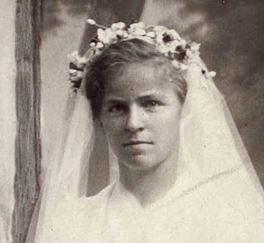




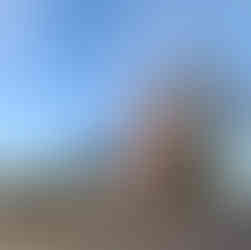




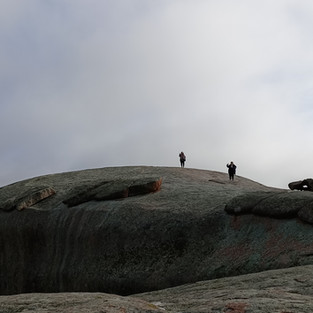





































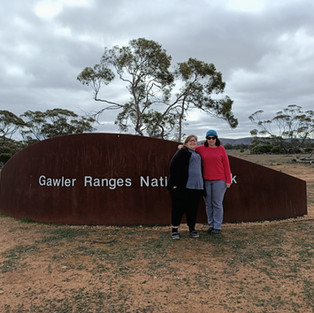





















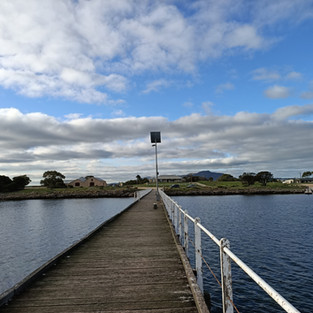



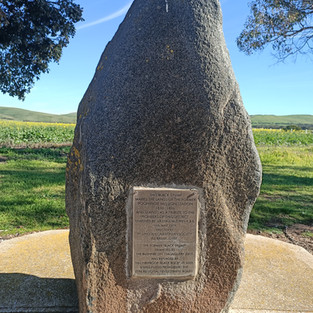









Very interesting story. I know Jean and the Kwaterskis, also Rick and Bruce. One small error, the twin hills are the Sturts, not Stuarts. Enjoyed reading your history.
Addenda: I have just received an email from a cousin of Rick Elefsen who has researched their family history and been to Norway and been informed that the spelling of the Elefsen name was incorrect. Also, that Andrew Elefsen didn’t have a twin. I have found similar with stories in my family tree - that the oral history wasn't quite right (but there was a bit of truth to them!)